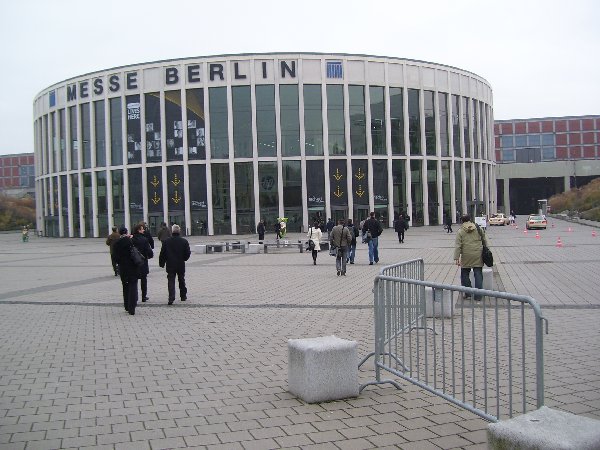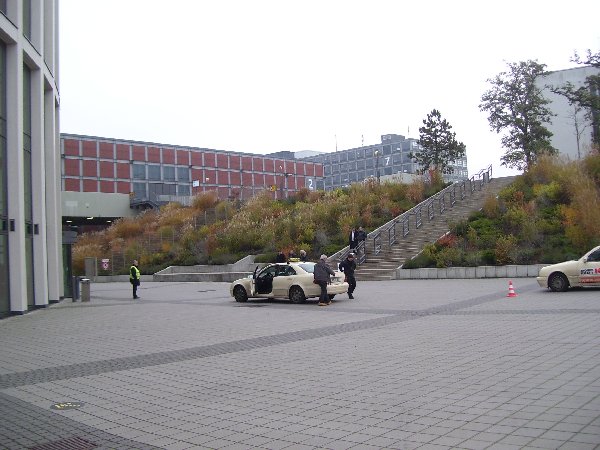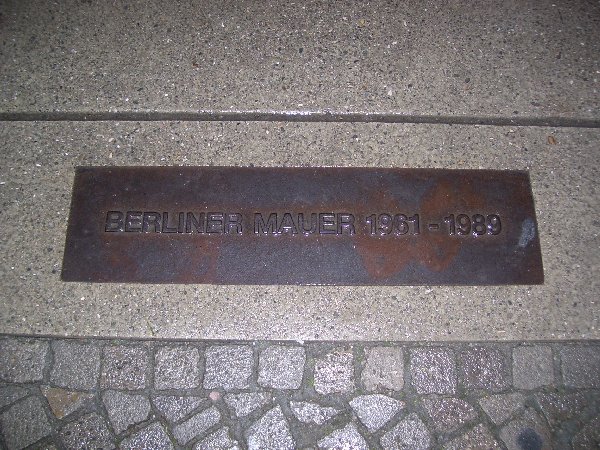I had to check Wikipedia to be sure how to spell that  . I thought this was a good post to pull some images off my camera and be a little touristy.
. I thought this was a good post to pull some images off my camera and be a little touristy.
Here is the U-Bahn (subway) station nearest the hotel. We rode the subways back and forth each day, about 30 minutes each way including changing lines, and all free thanks to a transit pass that I believe Kylie ("I'm 4 and a half and I'm a PC") might have created for us. Mine got crumpled and soggy but worked perfectly.

Here we all are headed into the Messe one morning. Big, isn't it?

This one shows you a little more of what we were up against. The big round thing is just the entrance to the complex. The red brick building with a big 2 on it had the speaker room in it. Behind it are other buildings of the same size with the exhibition halls, pavilions etc, and past that the food rooms. The blue-grey building with the 7 on it is the one that held all the breakouts. And yes, we had to go outside (and it rained a fair bit) when going from building to building - but only for 20 or 30 feet.

I have a bit of a running joke on my blog about donuts. Some Tech Eds have 'em ... and some don't. This one did. Apparently they're not called Berliners in Berlin. (And btw, JFK didn't say what you're thinking.)

Finally, here's all that's left of the wall in most spots:


And the Brandenburg Gate at night makes a very compelling image. We walked through, East to West.

Next year? I sure hope so.
Kate